

THE GODDARD PROJECT LIFE CYCLE

We begin with SCIENCE and end with SCIENCE.

This icon indicates expanded multimedia content. An interactive version of this report is also posted at issuu.com/nasagsfc.



A MESSAGE FROM THE DIRECTOR

Since our establishment in 1959 as the agency’s first spaceflight center, NASA’s Goddard Space Flight Center has grown from a handful of buildings and employees on our main campus in Greenbelt, Maryland, to one of the largest scientific organizations in the world overseeing six sites across the United States and more than 10,000 employees. Thanks to the dedication of our workforce – past and present – we have continually burnished our reputation as a global leader in our core competencies of astrophysics, Earth science, heliophysics, planetary science, and engineering and technology.
This year, like most of the rest of the world, we have largely rebounded from the deepest recesses of the COVID-19 pandemic, pushing forward with our mission of exploration and discovery while continuing to inspire others around our work.
After much anticipation, the James Webb Space Telescope launched in December 2021. Several months later, following an intense – yet, successful – commissioning phase, Webb produced eye-catching images for the world to see as it fulfills its expectation as the premier space observatory over the next decade.
As NASA moves forward in earnest with the Artemis program to send the first woman and first person of color to the Moon and eventually to Mars, Goddard is compiling data from existing missions to map the lunar surface, developing next-generation communications capabilities to prepare for the journey, mitigating risks by better understanding the space through which astronauts will travel, and studying lunar samples from previous missions as the past helps chart the future. We are confident in our contributions, setting the stage for what will be the next great space generation.
As we explore the farthest reaches of the universe and help NASA set foot on other worlds, we never forget that Earth is home for all of us. Informing scientists and policymakers worldwide of changes to our climate and Earth’s systems is vital to our mission. Our portfolio of Earth-observing spacecraft is second to none, and we are proud of the global resource we have become in addressing what is arguably the toughest challenge our planet has ever encountered. Meanwhile, our heliophysics capabilities augment our understanding of the effects of space weather on Earth as well as its effects in places we want to go. These endeavors are among the greatest that humanity has ever undertaken, and whether Goddard is leading the way or playing its part in a larger agencywide effort, we are proud to serve our stakeholders, including the largest and most important: the American people and humanity at large.
This report highlights our past year in greater detail, focusing not just on our achievements, but also on the opportunities that lie ahead. After all, by their nature, exploration and discovery are never-ending. I invite you to read the pages that follow and learn more about how our people are paving the path for the present as well as future generations.
On behalf of the people of NASA’s Goddard Space Flight Center, thank you for your interest in our work. We look forward to demonstrating how our center is redefining what is possible in the universe.


 Dennis J. Andrucyk Center Director
Dennis J. Andrucyk Center Director
Expert in the study of our world, the solar system, and beyond, NASA’s Goddard Space Flight Center has been working since 1959 to increase scientific understanding, answer humanity’s big questions, and benefit the society and communities we serve. The center’s work in science, engineering, technology, and communications strengthens our ability to envision the origins of life, preserve our way of living, and chart our place in the universe. We identify requirements and innovations; design, build, and launch spacecraft; and manage and support entire space missions. Our foundational communications infrastructure enables NASA and others to retrieve knowledge from space, share it with diverse stakeholders, and apply it to society in countless ways.
Goddard manages six sites: its main campus in Greenbelt, Maryland; Wallops Flight Facility in Wallops Island, Virginia; the Goddard Institute for Space Studies in New York; the Katherine Johnson Independent Verification & Validation Facility in Fairmont, West Virginia; the White Sands Complex in Las Cruces, New Mexico; and Columbia Scientific Balloon Facility in Palestine, Texas.

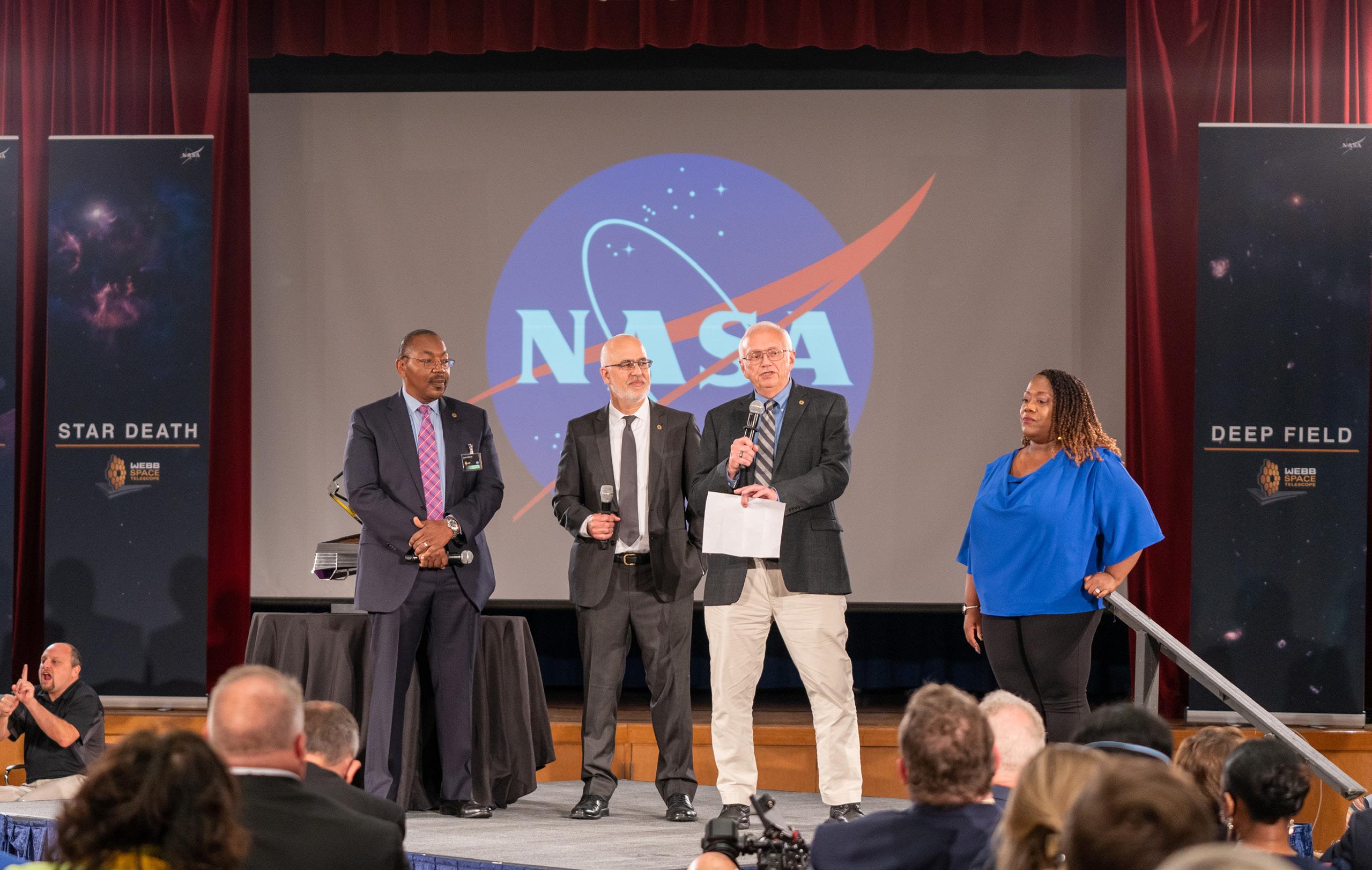
WEBB

THE SPACE OBSERVATORY OF THE NEXT DECADE
JAMES WEBB SPACE TELESCOPE BEGINS SCIENCE OPERATIONS

In 1996, NASA set off to build a successor to the Hubble Space Telescope that would peer into the far reaches of the universe in the infrared part of the spectrum. Engineers came up with a design that included an optical telescope element composed of 18 mirror segments, an integrated science instrument module containing four main science instruments, a spacecraft bus that provides support functions for the telescope’s operations, and a sunshield that insulates the telescope’s sensitive optics and science instruments from the heat of the Sun, Earth, and Moon.

After much anticipation, Webb launched from the European Space Agency’s Spaceport in Kourou, French Guiana, aboard an Ariane 5 rocket on Dec. 25, 2021, setting off on a monthslong Goddardled commissioning process that readied the telescope for science observations.
NASA’s Goddard Space Flight Center provides overall mission management, and the Space Telescope Science Institute in Baltimore performs flight and science operations.
Webb is currently in a stable orbit a million miles away from Earth, working to fulfill its science mission: to observe the formation of the first stars and galaxies, to help discover how galaxies have assembled and evolved over billions of years, to peer into cosmic nurseries to witness the formation of stars and planetary systems, and to analyze the atmospheres of exoplanets and potentially identify the building blocks of life.
The NASA community was joined by agency leadership, members of Congress, and others in the science community for a live NASA Television broadcast – primarily taking place on Goddard’s campus in Greenbelt, Maryland – on July 12, 2022, that revealed the first five images from the telescope, garnering attention from media outlets worldwide. The day prior, the White House released a preview of the first image – known as Webb’s First Deep Field – which features thousands of galaxies that represent a patch of the night sky that is approximately the size of a grain of sand held at arm’s length by someone on the ground.
Dr. John Mather is Webb’s senior project scientist. He was the corecipient of the 2006 Nobel prize in physics for his work on the Cosmic Background Explorer, which helped validate the bigbang theory.

The Space Observatory of the Next Decade
Webb is the scientific complement to NASA’s Hubble Space Telescope, expected to be the premier space observatory over the next decade. Webb is an international project led by NASA with its partners, the European Space Agency and Canadian Space Agency.
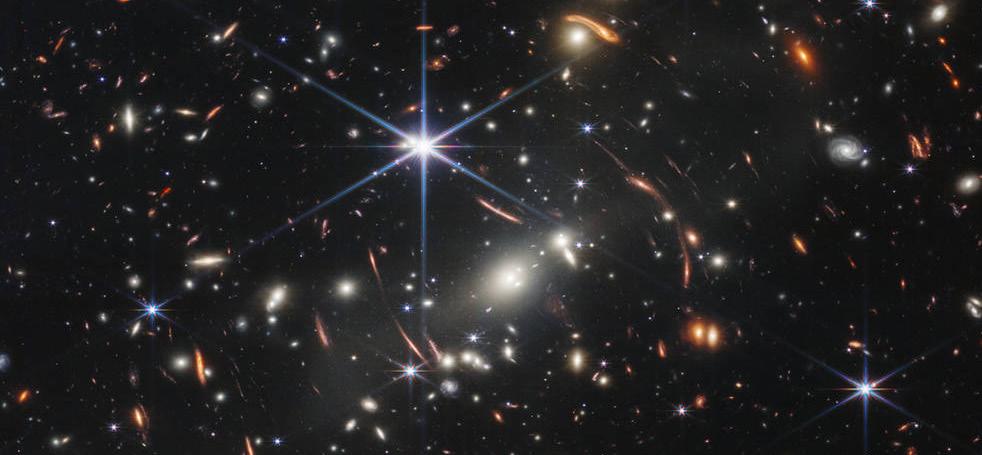




NASA Headquarters in Washington oversees the Webb telescope mission. Goddard manages Webb for the agency and oversees work on the mission performed by the Space Telescope Science Institute, Northrop Grumman, Ball Aerospace, L3Harris Technologies, and other mission partners. In addition to Goddard, several NASA centers contributed to the project, including the agency’s Johnson Space Center in Houston, Jet Propulsion Laboratory in California, Marshall Space Flight Center in Alabama, Ames Research Center in California, and others.
For more information about the James Webb Space Telescope, visit www.jwst.nasa.gov.
A GLOBAL CLIMATE LEADER
A LONG TRADITION OF STUDYING EARTH’S SYSTEMS

“For years, our nation and many of us have discussed, have lamented, have talked about the threat of climate change,” Vice President Kamala Harris said during an August 2022 speech. “Climate change has become a climate crisis. And a threat has now become a reality.”

Goddard is standing to meet that reality with its Earth scientists and Earth-observing missions. The year 2022 continued Goddard’s long tradition of leading the way in climate research and modeling, pushing the boundaries of how much we can learn about the way our precious planet works as a system and how that information can be harnessed to inform critical decisions about our future.
Climate Science Research - Modeling and Assimilation
Goddard is home to the most advanced climate modeling in the world, and the demand for such research is only increasing. Models are created from mathematical equations to help understand and ultimately simulate the processes of Earth systems. Using data points from satellites, models allow researchers to predict future climate systems, test hypotheses, and draw conclusions on past systems. Scientists and engineers at Goddard are at the forefront of the burgeoning wave of big data in climate science, and 2022 was no exception.
In June and July, heat waves were experienced across several continents. Temperatures soared above 104 degrees Fahrenheit in many places across Europe, North Africa, the Middle East, and Asia. Combining these observations with a version of the Global Modeling and Assimilation Office’s (GMAO) Goddard Earth Observing System (GEOS) global model, an image of the Eastern Hemisphere of Earth was created, showing surface air temperatures.

Modeling of the current phenomena around Earth helps with current and future understanding of Earth’s systems and what may be causing and impacting weather extremes.

Long-running observations from space from such programs as Landsat – which celebrated its 50th anniversary in July – provide crucial climate data for informing and improving modeling and projections. The mission is a partnership between NASA and the U.S. Geological Survey (USGS), and it has continued to provide images of Earth’s surface and changes to land coverage since the advent of Earthobserving satellites.
Christian Braneon, when he was part of the Goddard Institute for Space Studies (GISS), led a study that used Landsat historical data over Chicago to see the trends of surface heat severity over time. The results identified areas most amenable to green roofs and green infrastructure, which can have cooling effects that can mitigate urban heat. This project could serve as a reference for a replicated and scaled tool.
In addition to heat, another theme that was the topic of several pieces of research was the carbon cycle and the various ways that Earth’s systems interact with the cycle.
In April 2022, NASA’s Global Ecosystem Dynamics Investigation (GEDI) mission released its newest data product, showing the carbon stored by the above-ground forest biomass – a near-global estimate. Utilizing advanced statistical models, GEDI’s product is the first to include a well-described uncertainty for the estimates, allowing for an increased accuracy of the understanding of how Earth’s forests are changing and will further help with predictions of how much carbon could be released due to wildfires or deforestation.
Forests and trees make up a major part of the understanding of the carbon cycle, as does the ocean. NASA scientists Ivona Cetinić, Aimee Neeley, and others traced the carbon export path in the ocean by using DNA sequencing of individualized sinking particles, including microscopic fecal matter from phytoplankton. Published in Nature in April 2022, the research provides a pathway for combining DNA sequencing and ocean color measurements to improve modeling of ocean carbon exports.
Looking forward, this research will prove to be useful as Goddard’s Phytoplankton, Aerosol, Cloud, ocean Ecosystem (PACE) mission will be able to analyze processes below the surface of the ocean as well.
The People of Climate Science
In May 2022, Cynthia Rosenzweig, senior research scientist and head of the Climate Impacts Group at GISS, was awarded the World Food Prize for her research in understanding the relationship between climate and food systems, as well as her modeling work for how both will change in the future. Her team’s modeling work was a foundational component of decisionmaking processes for strategies to adapt food systems amid the changing climate.
The World Food Prize is a prestigious award with a mission “to elevate innovations and inspire action to sustainably increase the quantity, quality, and availability of food for all.”
In July, another major honor – the NASA Robert H. Goddard Science Excellence Award – went to Amin Dezfuli for his work on how climate patterns affect bird migration. Dezfuli is a GMAO senior research scientist who focuses on various climate-related applications, including how largescale climate phenomena impact ecology and avian migration systems. A paper published in the Bulletin of the American Meteorological Society showed how Dezfuli and his team used 23 years of bird migration data in comparison with meteorological and climate model data. They found that variability of bird migration is strongly linked to air and sea surface temperature, which are key indicators of regional climate change.
Future of Climate Science Research
In a changing climate, answering critical questions about the complexities of Earth’s systems becomes increasingly important. One way Goddard is getting ahead of those questions is with a new platform called
the Earth Information System (EIS), a pilot project that has innovated ways to integrate different types of data and modeling capabilities. EIS aims to make new connections that will enhance short- and long-term analysis and decision-making in support of preparation, mitigation, and climate resilience.
In the past year, the EIS team has:
• Used open science tools to integrate water cycle variables and models to examine the impact of human impacts on freshwater availability and hydrological extremes. EIS can now accurately characterize the drivers of floods and drought, along with their impacts.
• Assessed the threat to coastal areas from multiple factors, including sea level rise and climate-induced hydrological changes.
• Synthesized several NASA remote-sensing assets to automatically map the spread of fire events and develop representations of the causes of fires and their subsequent impacts on the ecosystem and hydrosphere.
• Demonstrated state-of-theart examples of open-source science through collaboration environments that integrated Earth science data sets, data analytics, Earth system models, and visualization tools on cloud infrastructure.
• Created new science capabilities by reducing barriers to entry for NASA datasets. EIS integration efforts enabled the genesis of a water quality modeling prototype, developed by an external research group.
The EIS team was able to rapidly accomplish its science and applications objectives through an innovative combination of traditional on-premise computer resources, along with emerging cloud-based services. The project will continue expanding on its focus areas – freshwater, fire, sea level change, and greenhouse gases –while leading the scientific community into the future of open science and user-friendly data.
ARTEMIS AND BEYOND
SUPPORTING THE NEW ERA OF HUMAN SPACEFLIGHT

Dating back to its beginnings, NASA’s Goddard Space Flight Center has supported the agency’s human spaceflight endeavors, from Project Mercury and the Apollo missions to the Space Shuttle Program and today’s International Space Station expeditions. The center remains vital to NASA’s human exploration initiatives, including the recent missions of the Commercial Crew Program and the upcoming Artemis missions, which will send the first woman and first person of color to the Moon in preparation for eventually sending humans to Mars.
Scientific Research
Planetary Science

Data products from the Lunar Reconnaissance Orbiter, including high-resolution images and topographic maps, have helped identify Artemis science objectives as well as 13 candidate landing regions near the lunar south pole for Artemis III, which will be the first crewed Artemis mission landing on the lunar surface and will feature the first woman to set foot on the Moon. Goddard scientists are active in the lab and field, the results of which provide valuable input to the design of new science instruments, as well as hardware and strategies to be used by astronauts. Scientists have also received 50-year-old lunar samples from the Apollo 17 missions, and they will study the samples to help NASA better understand the Moon in advance of upcoming missions.

Space Weather Research
Goddard heliophysics missions provide detailed data about the space environment and radiation encircling the Sun, Earth, and Moon. This helps scientists model conditions of the very space we travel through, which helps keep astronauts, instruments, and spacecraft safe from harsh environments. Goddard is also building one of the first instrument suites, HERMES, for the lunar Gateway to enhance our ability to forecast space weather. The recently established Moon to Mars Space Weather Analysis Office will also provide novel capabilities in characterizing the space radiation environment.
In-space Servicing, Assembly, and Manufacturing


Goddard is developing servicing technologies that are critical to sustainable human exploration. The capabilities will allow spacecraft to live longer and journey farther. We also develop important tools that help enable a sustained human presence in space. From astronaut tools for instrument repairs to robotic tools for leak detection and other operations, we ensure NASA has
the right tools to maintain astronaut habitats in space. Currently used aboard the International Space Station, these tools can be applied to future exploration missions and human habitats on the Moon, Mars, and beyond.


Space Communications and Navigation
Communications Services
Goddard’s communications and navigation community oversees NASA’s Near Space Network, which provides critical services to missions within 2 million kilometers of Earth through a blend of government and commercial providers. The network supports demonstrations, human spaceflight, science, and robotic missions, giving them the essential services they need for tracking, telemetry, and control, as well as for returning data to Earth for investigation and discovery. The network, along with the new commercialization office, is embracing the agency’s goal for increased commercialization, enabling a robust communications and navigation marketplace.
Navigation Services
Goddard’s Flight Dynamics Facility provides missions with comprehensive and reliable navigation services. The facility uses tracking data to ensure the success and safety of a variety of missions, including those in human spaceflight. In the unlikely event of a launch abort, the facility has developed new tools, software, and operations concepts to ensure missions stay connected to mission operations centers on Earth. Navigation experts are also designing the satellite navigation systems and architectures of the future while serving as navigation experts on the international stage.
Search and Rescue
For the international satelliteaided search and rescue effort, Goddard’s Search and Rescue office develops emergency beacons and the flight and ground systems that support them. These technologies support Earth-based search and rescue, as well as astronaut safety. The office is currently testing critical distress beacon technologies for Artemis contingency operations.
ADVANCING SUBORBITAL FLIGHT AND NEW LAUNCH RANGE TECHNOLOGY
WALLOPS

Founded in 1943 as a naval air station and managed by NASA’s predecessor agency beginning in 1945, NASA’s Wallops Flight Facility provides agile, low-cost flight and launch range services to meet government and commercial sector needs for accessing flight regimes worldwide, from Earth’s surface to the Moon and beyond. Wallops’ flight assets ranging from research aircraft, unmanned aerial systems, and high-altitude balloons to suborbital and orbital rockets provide a full-range of capability, while operational launch range and airfield capabilities meet ongoing and emerging needs in the science, aerospace, defense, and commercial industries.

During the past year, Wallops helped oversee an International Space Station cargo resupply mission carrying more than 8,000 pounds of cargo and experiments to the orbiting outpost. Wallops also flew nearly 700 science and technology flight hours with its research aircraft, twice as many as the previous year. In addition, Wallops launched 19 sounding rockets and eight scientific balloon flights from the facility and other locations worldwide. Wallops is also managing a growing portfolio of small satellite missions with five projects underway totaling nearly $30 million. In addition to orbital and suborbital flight missions, Wallops led the development of the NASA Autonomous Flight Termination Unit (NAFTU).

Rocket Lab Neutron Rocket Production Facility
Rocket Lab, which is poised to launch its Electron rocket from Wallops in 2022 using the NAFTU software, announced Wallops as the home of its Neutron rocket production facility and launch pad. In April, officials broke ground on the Neutron Production Complex, which will include a rocket production, assembly, and integration facility just outside the NASA gate to Wallops Island. A dedicated launch pad will be located on the south end of the island.


“NASA’s only owned and operated launch range at Wallops Flight Facility supports small- and medium-class orbital rocket launches, which are key contributors to a growing space economy,” said Wallops Director David Pierce. “The high-tech jobs created by this move are vital for the Wallops region, and I’m excited we’re bringing more of the agency’s expertise to Rocket Lab, Virginia Space, and all our partners on the Eastern Shore.”
Rocket Lab has targeted the first Neutron medium class orbital rocket launch for no earlier than 2024.
Wallops Flight Facility

Launches From Australia
NASA’s Wallops-based Sounding Rocket Program launched three missions from Equatorial Launch Australia’s Arnhem Space Center in Australia’s Northern Territory, conducting astrophysics studies that can only be done from the Southern Hemisphere.

“In addition to furthering our science goals, this science campaign builds on recent collaborative efforts with Australian organizations, including the Artemis Accords, NASA’s Climate Absolute Radiance and Refractivity Observatory Pathfinder mission, and the development of a lunar rover that could launch as early as 2026,” said Thomas Zurbuchen, NASA associate administrator for the Science Mission Directorate.
These were the first sounding rockets to launch from a commercial launch facility outside of the United States. In addition, they were the first NASA rocket launches from Australia since 1995, when launches were conducted from the Royal Australian Air Force Woomera Range Complex.
HIGHLIGHTING THE IMPORTANCE OF THE HELIOPHYSICS FLEET HELIOPHYSICS
December 2019 marked the beginning of the latest solar cycle – Solar Cycle 25 (or 25th since 1755) – a nearly periodic 11-year change in the Sun’s activity, measured in terms of variations in observed sunspots on the solar surface. The Sun’s activity has quickly ramped up, and even though peak levels in this cycle have yet to be reached, the Sun’s activity is already exceeding predictions. Solar events will continue to increase as we near solar maximum – the greatest period of solar activity in this cycle – in 2025, and our lives and technology on Earth, as well as satellites and astronauts in space, will be impacted.
With more activity comes an increase in space weather events, including solar flares and solar eruptions, which can impact radio communications, electric power grids, and navigation signals, as well as pose risks to spacecraft and astronauts. Humans have an increasing dependence on space-based technology and ground-based infrastructure that are susceptible to the dynamic nature of space. For many new commercial and government stakeholders, this already stronger-than-expected solar cycle will be the first they navigate.
Space Weather and Global Impacts

There are more than 35,000 objects orbiting in the ionosphere-thermosphere (I-T) region around our planet, including the International Space Station, weather and communications satellites, and other operational government assets, with many more being launched each year. In addition, astronauts who are part of the Artemis missions will travel through this region on their journey to the Moon. When the I-T system is pummeled by solar and geomagnetic activity, these assets are adversely affected.

For example:
• Variable satellite drag due to atmospheric heating modifies spacecraft operations and orbits. This can cause satellites to reenter Earth’s atmosphere prematurely, decrease satellite lifetimes, increase the risk of orbital collisions, and cause spacecraft to be out of optimal position for their mission.
• Radiofrequency communication and navigation capabilities are degraded.
• GPS positioning experiences errors due to the ionospheric disturbances (in plasma density) that occur on regional scales (a continent or larger).
• Space-to-surface transmission noise is increased. This affects military monitoring of the north polar region and communications globally.
• During times of geomagnetic activity, the near-polar regions experience high fluxes of radiation in the form of energetic particles. These particles can travel to low altitudes, where they become a concern for airplane flight crews and passenger health.
• When intense electrical currents driven by space weather flow overhead in the I-T system, they can produce enormous “mirror” currents in power lines and pipelines. These currents can damage or destroy critical infrastructure, leading to expensive power outages or maintenance and repair costs.
The key to making dramatic improvements in our ability to predict and mitigate such events lies in finally understanding Earth’s I-T system. This is the heart of the local space environment: All processes active in near-Earth space start, end, or are modified there. Despite its importance, this transition region is the aspect of Earth’s space environment that is least understood as a global system.
NASA’s Heliophysics Division is developing a mission that will provide crucial advances in our understanding of the I-T system – the Geospace Dynamics Constellation (GDC). This mission will provide the first coordinated global-scale observations of the I-T region, where the effects of solar activity are often seen. The mission’s study of the global, coupled system will enable dramatic improvements in our space weather models, which will lead to the mitigation of negative effects on space-based, air-based, and ground-based assets.
Our Eyes on the SunEarth Connection
NASA’s approach to heliophysics is as “system science.” The agency is using the Heliophysics System Observatory as a global observatory, and not just as distinct missions. On the ground, Diversify, Realize, Integrate, Venture, Educate (DRIVE) science centers provide the glue needed to connect and advance NASA’s mission fleet.

Goddard has co-investigators who work with the DRIVE centers and manage many of the missions from which the centers use data.
The division currently has 19 active missions – with 26 spacecraft –and 13 more under development. These missions work together to provide the full picture of our solar system, from the interior of the Sun, to impacts on Earth, and the Sun’s influence at the very edge of our solar system.
The heliophysics mission fleet provides invaluable insights into our Sun, from understanding the corona – the outermost part of the Sun’s atmosphere – to examining the Sun’s impacts throughout the solar system, including here on Earth, in our atmosphere, and into interstellar space.
The fleet is not only critical to protecting the technology and infrastructure that support our modern society. It also aids and enables space exploration, including NASA’s Artemis missions to the Moon and Mars. HERMES – a compact spaceweather station that will track solar activity – and ESCAPADE, which will revolutionize our understanding of how solar wind momentum and energy flow throughout Mars’ magnetosphere, are two missions that will help underpin and further the Artemis missions.
In addition to spacecraft, the Moon to Mars Space Weather Analysis Office at Goddard supports the efforts to return astronauts to the Moon by characterizing the space radiation environment there and by providing space weather assessments and anomaly analysis support for robotics.
The next few years will be a time of tremendous innovation, exploration, and inspiration in the division. Efforts are being highlighted through a combined effort called the “Heliophysics Big Year,” which begins with an annular eclipse in October 2023 that will pass through parts of the United States, and includes a total eclipse in April 2024 that will pass through the United States as well, new mission launches, and unprecedented leaps forward in the understanding of space weather and the Sun-Earth connection. The Heliophysics Big Year culminates with Parker Solar Probe’s record-breaking closest approach to the Sun.


THIS IS SCIENCE OUR
FOCUS AREAS
EARTH SCIENCE
We observe and study Earth’s system to further scientific understanding of our home planet and to improve predictions of its evolving state due to human behavior and natural changes.
ASTROPHYSICS
We investigate the universe through astronomy, astrophysics, and fundamental physics on issues such as dark matter and energy, life-harboring planets, and black holes.
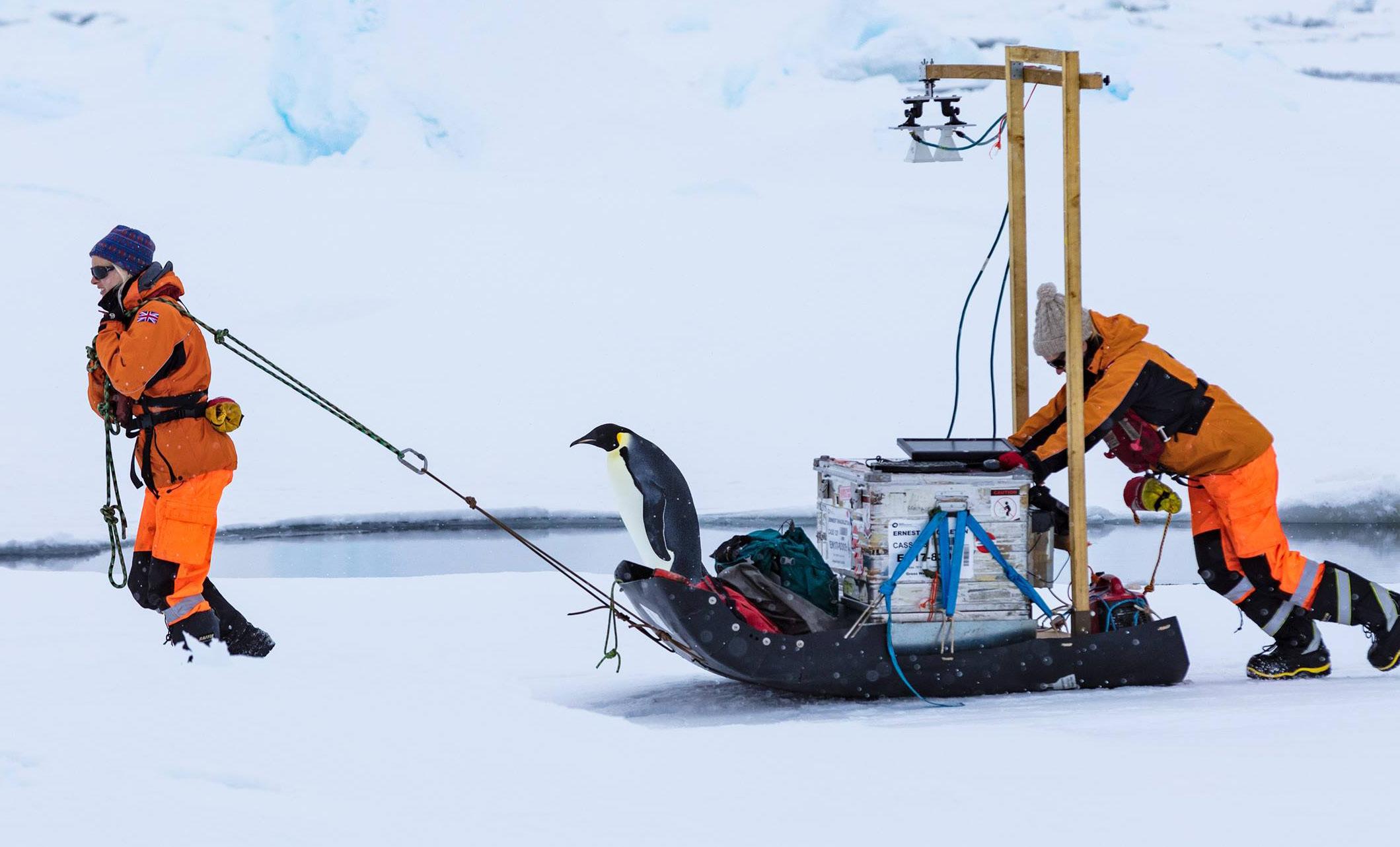
HELIOPHYSICS
We study the Sun and how it influences and affects the space environment – ours and those of the other planets in our solar system – and in turn, the technology we send into space.
PLANETARY SCIENCE


This Is Science
SPACE COMMUNICATIONS AND NAVIGATION


SUBORBITAL PROGRAMS AND RANGE SERVICES



Sensor Systems and Instrument Platforms
Goddard builds instruments for missions, ranging from subsystems – such as detectors and optical elements – to full instruments and complex instrument suites. The center’s sensor and detector development covers the entire electromagnetic spectrum, gravitational waves, and particle detection. Goddard also leads in developing optical systems and laser development for next-generation decadal missions and has an unprecedented capability in demonstrating picometer stability under varying thermal conditions.

Large-scale Scientific Information Systems, Data Processing, Integration, and Dissemination
Goddard designs, implements, and integrates custom, large-scale data systems and supercomputing applications for high-performance computing and archiving of a wide range of science data.
In-space Servicing, Assembly, and Manufacturing
Goddard services enable extended mission operations, reconfiguration, and recovery, including in-orbit spacecraft refueling and repair, assembling large structures in orbit, and enabling modular designs.
Technology Innovation, Design, and Maturation to Enable Future Exploration
Goddard is a leader in developing, implementing, and maturing technology programs, collaborating closely with the science community and other customers to identify new and emerging technology requirements.
Digital Engineering
Goddard is at the fore in digital engineering transformation, a multidisciplinary effort to incorporate digital tools to increase efficiency, integration, and interoperability for quicker iterative engineering, design validation,
This Is Engineering and Technology
and hardware build verification. This innovative approach minimizes the inefficiencies of human-in-the-loop processes, fixes project issues early in the engineering life cycle, and reduces product delivery time.
PROGRAM HIGHLIGHTS
Quantum Technology Development

Incorporating quantum sensing and atom interferometry into science instruments will improve science measurements across multiple lines of business. Notably, Goddard’s Atom Interferometer Gravity Gradiometer offers direct, real-time measurements of Earth’s gravitational field and changes over time, which is critical to understanding climate change. Quantum communications has even broader impacts across all areas and lines of business.


SWARM
SWARM is a new avionics technology that gives scientists a neverbefore-offered capability in sounding rocket-based research. With SWARM technology, sounding rockets deploy multiple soda can-sized subpayloads to varying altitudes where their onboard miniaturized instruments gather multipoint measurements. A SWARM radio receiver located on the main (mother) payload gathers the subpayloads’ data and multiplexes them into one data stream that it transmits to ground stations below.
SAINT
Goddard’s Search and Rescue Intelligent Terminal (SAINT) is an innovative technology directly supporting NASA’s Artemis program. It provides capsule location and astronaut beacon location to on-scene rescue forces and is a revolutionary step in data dissemination for search and rescue purposes. In the event of an emergency during launch or landing, SAINT will be used to provide critical insight to the mission control center at NASA’s Johnson Space Center in Houston and the NASA recovery director aboard the USS Portland.
HIGHLIGHTS OF 2022
WEBB ASTROPHYSICS
Expected to be the next great space observatory over the next decade, the James Webb Space Telescope launched from the European Space Agency’s Spaceport in French Guiana in December 2021. Science operations began months after a successful Goddard-led commissioning process, leading to the release of the first five images in July 2022. Webb was designed to solve mysteries in the solar system, looking beyond to distant worlds around other stars and probing the mysterious structures and origins of the universe and humanity’s place in it.

LCRD COMMUNICATIONS AND NAVIGATION
Launched in December 2021, the Laser Communications Relay Demonstration (LCRD) continues Goddard’s long-standing role in space communications, demonstrating the agency’s first two-way laser communications relay system by sending and receiving data over infrared lasers. The technology enables data rates 10 to 100 times greater than traditionally used radio frequency systems. This year, LCRD began its experiment program, testing the capabilities of laser communications through experiments with academia, industry, and other NASA missions.

LANDSAT 9 EARTH SCIENCE

The Landsat program marked its 50th anniversary in July 2022, celebrating five decades of a partnership between NASA and the U.S. Geological Survey that has provided a continuous record of Earth’s land surfaces and helped scientists and policymakers monitor, understand, and manage the land resources needed to sustain life. The latest iteration of the program, Landsat 9, launched in September 2021, and first images were released a month later. It works closely with its predecessor, Landsat 8, to collect data on our changing planet.
PARKER SOLAR PROBE HELIOPHYSICS
Parker Solar Probe has traveled through the Sun’s atmosphere – closer to the surface than any spacecraft before – sampling particles and magnetic fields while providing humanity with the closest-ever observations of our nearest star. During a recent flyby of Venus – whose gravity helps bring the spacecraft closer to the Sun – in July 2020, Parker took the first visible light images of the planet’s surface from space, helping advance research of Earth’s neighbor by revealing the presence of such features as continental regions, plains, and plateaus. Results were published in February 2022.

LUCY
PLANETARY SCIENCE
NASA’s Lucy mission launched en route to the Trojan asteroids in October 2021 from Cape Canaveral Space Force Station in Florida. Named after the fossilized skeleton of a prehuman ancestor, Lucy will fly by one main belt asteroid and seven Trojan asteroids during its 12-year primary mission, potentially revolutionizing humanity’s knowledge of planetary origins and the formation of the solar system. The mission completed the first of three Earth gravity assists in October 2022. It is scheduled to arrive at the first asteroid target in 2025.
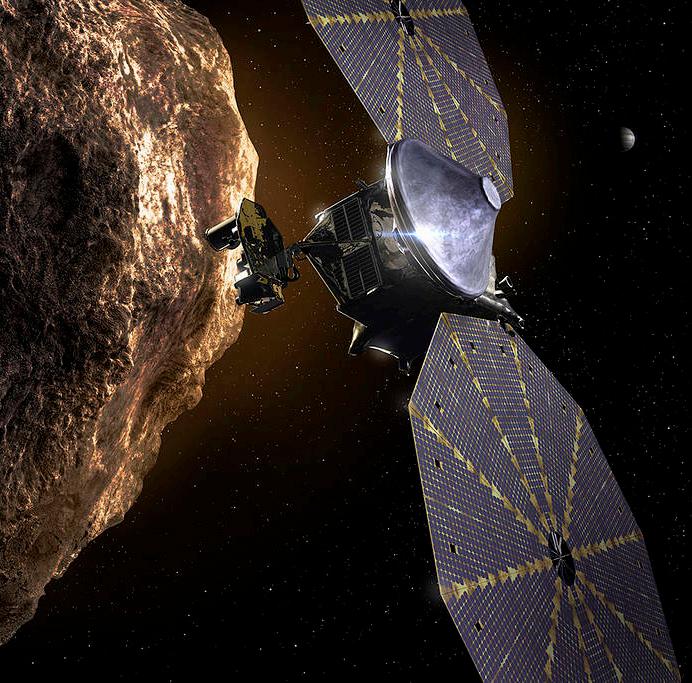
NAFTU TECHNOLOGY

The NASA Autonomous Flight Termination Unit (NAFTU) is a command and control system helping to ensure public safety during launch operations at all U.S. launch ranges. Wallops Flight Facility – in collaboration with NASA Headquarters, U.S. Air Force, U.S. Space Force, and Federal Aviation Administration – began development of NAFTU in 2020 when it became fully funded, designing it to be customizable and support a wide array of launch vehicles at any range.

HUBBLE ASTROPHYSICS
The Hubble Space Telescope officially passed the 1-billion-second mark of operations on Jan. 1, 2022. Now entering its 33rd year of operations, Hubble has revolutionized humanity’s understanding of the universe through countless discoveries and memorable images, taking more than 1.5 million observations since its launch in 1990. It is NASA’s most productive science mission to date. With the launch and commissioning of the James Webb Space Telescope completed, NASA expects both observatories to work together well into the 2020s.

TBIRD COMMUNICATIONS AND NAVIGATION
The TeraByte InfraRed Delivery (TBIRD) system, carried aboard NASA’s Pathfinder Technology Demonstrator 3 mission as part of a SpaceX rideshare launch in May 2022, will showcase the high-data-rate capabilities of laser communications from a CubeSat in low-Earth orbit. At 200 gigabits per second, TBIRD will download data at the highest optical rate ever achieved by NASA. Laser communications will help the agency develop more efficient communications systems necessary to explore the Moon and Mars and help collect data from enhanced scientific instruments aboard spacecraft.

HIGHLIGHTS OF 2022 OSAM-1
TECHNOLOGY
NASA’s On-Orbit Servicing, Assembly, and Manufacturing (OSAM-1) – a mission that will be the first to robotically refuel a satellite not designed to be serviced and that will demonstrate assembly and manufacturing technologies and capabilities in space – passed its mission critical design review in March 2022. The milestone paves the way for the construction of the OSAM-1 spacecraft, payloads, and ground system by NASA and its partner Maxar Technologies in preparation for a launch no earlier than 2026.


ILLUMA-T COMMUNICATIONS AND NAVIGATION
NASA’s new laser communications terminal, ILLUMA-T, arrived at Goddard from the Massachusetts Institute of Technology’s Lincoln Laboratory to undergo final assembly and testing to ensure it can withstand the rigors of a rocket launch and the extreme environment of space. Once it is installed aboard the International Space Station, the terminal will use laser communications to relay data to and from Earth via NASA’s Laser Communications Relay Demonstration. ILLUMA-T could allow astronauts and experiments aboard the orbiting laboratory to send and receive substantially more data, including pictures and video.
ROCKET LAB SUBORBITAL
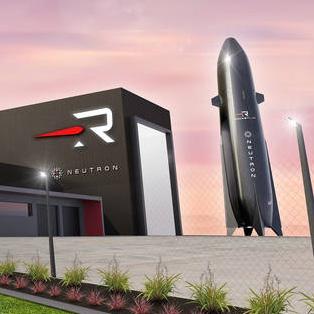
Wallops Flight Facility was selected by launch and space systems company Rocket Lab as the home for its new Neutron rocket’s first launch pad and production facility, further supporting the growth of commercial space capabilities in Virginia. Rocket Lab broke ground on the Neutron Production Complex – which will include a rocket production, assembly, and integration facility – in April 2022. The company has targeted the first Neutron medium-class orbital rocket launch for no earlier than 2024.
DAVINCI PLANETARY SCIENCE
NASA’s Deep Atmosphere Venus Investigation of Noble-gases, Chemistry, and Imaging mission (DAVINCI) will descend through the layered Venus atmosphere to the surface of the planet in mid-2031, becoming the first U.S. space probe to do so in more than 40 years. DAVINCI will study Venus from above its clouds down to its surface, investigating how the planet and its massive atmosphere formed and evolved over the past 4.5 billion years. NASA revealed new details about DAVINCI in June 2022, detailing instruments that will study the planet’s cloud and highland areas and how it will make use of Venus’ gravity assists.

THIS IS WHAT WE DO
A PLACE FOR SUCCESS OUR LINES OF BUSINESS
We help answer crucial science questions through complex missions that depend on dedicated and innovative teams to develop pioneering technologies. Goddard is one of the few organizations worldwide that manages missions from the concept phase through operations, utilizing internal, partner, and industry expertise and resources along the way.

The depth and expertise of our scientists, engineers, technologists, project managers, and support personnel form the foundation of our unique strength. With our leadership in scientific research and instrument and spacecraft development, the center has a renowned capability to conceive and manage advanced science, technology, and space systems through the entire mission life cycle.







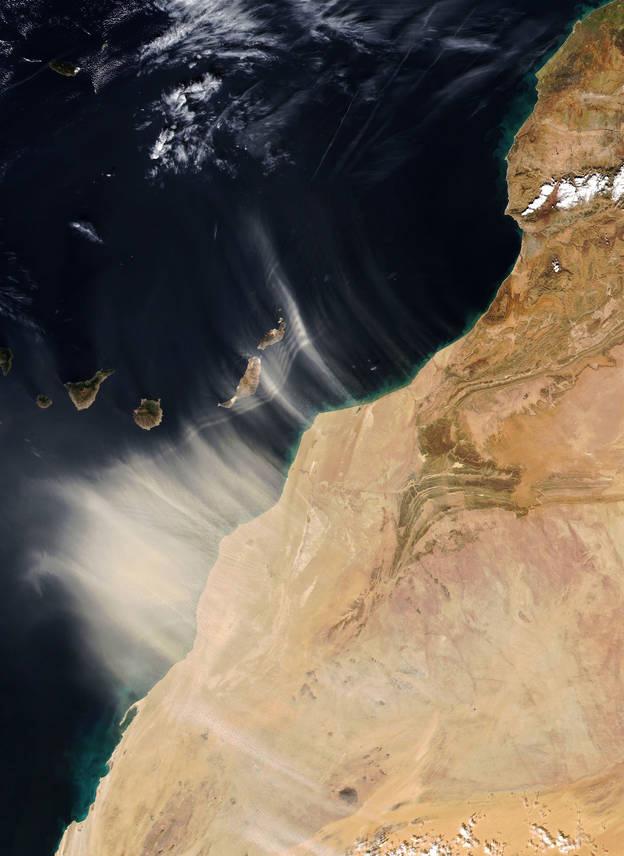









science.gsfc.nasa.gov/astrophysics
The Goddard Astrophysics Science Division comprises eight specialized laboratories and offices. Its major focus areas include the nature of dark matter and dark energy, the search for habitable planets outside our solar system, the origin and evolution of the universe, and the nature of space and time at the edges of black holes. FACILITY: Greenbelt
IN DEVELOPMENT
• Advanced Telescope for High Energy Astrophysics (ATHENA)*
• BurstCube
• Compton Imager and Spectrometer (COSI)
• Experiment for Cryogenic Large-Aperture Intensity Mapping (EXCLAIM)
• Laser Interferometer Space Antenna (LISA)*
• Nancy Grace Roman Space Telescope
• Pandora
• Trans-Iron Galactic Element Recorder for the International Space Station (TIGERISS)
• X-Ray Imaging and Spectroscopy Mission (XRISM)*
OPERATIONAL
• Balloon-borne Cryogenic Telescope Testbed (BOBCAT)

• CALorimetric Electron Telescope (CALET)*
• Fermi Gamma-ray Space Telescope


• Hubble Space Telescope



• International Gamma-Ray Astrophysics Laboratory (INTEGRAL)*
• James Webb Space Telescope (JWST)
• Neil Gehrels Swift Observatory
• Neutron star Interior Composition ExploreR (NICER)
• Primordial Inflation Polarization Explorer (PIPER)
• Super Trans-Iron Galactic Element Recorder (SuperTIGER)








• Transiting Exoplanet Survey Satellite (TESS)

• X-ray Multi-Mirror Mission (XMM-Newton)*
*Joint agency satellite

science.gsfc.nasa.gov/heliophysics
Space seethes with energy, magnetic fields, and countless particles, many of which come from the Sun. This radiation and magnetic energy can affect Earth’s atmosphere, spacecraft, radio communications, and astronauts. Understanding the environment surrounding Earth is critical for protecting satellites and helps us learn more about the space through which astronauts travel. Goddard conducts research on the Sun and how its output modifies space throughout the solar system.
• Atmospheric Waves Experiment (AWE)
• Coronal Diagnostic Experiment (CODEX)*

• Electrojet Zeeman Imaging Explorer (EZIE)
• Escape and Plasma Acceleration and Dynamics Explorers (ESCAPADE)
• Extreme Ultraviolet High-Throughput Spectroscopic Telescope Epsilon Mission (EUVST)*
• Geospace Dynamics Constellation (GDC)
• Global Lyman-alpha Imagers of the Dynamic Exosphere (GLIDE)
• Heliophysics Environmental and Radiation Measurement Experiment Suite (HERMES)
• Interstellar Mapping and Acceleration Probe (IMAP)
• Polarimeter to Unify the Corona and Heliosphere (PUNCH)

• Sun Radio Interferometer Space Experiment (SunRISE)
• Tandem Reconnection and Cusp Electrodynamics Reconnaissance Satellites (TRACERS)
OPERATIONAL
• Advanced Composition Explorer (ACE)

• Aeronomy of Ice in the Mesosphere (AIM)

• Deep Space Climate Observatory (DSCOVR)*
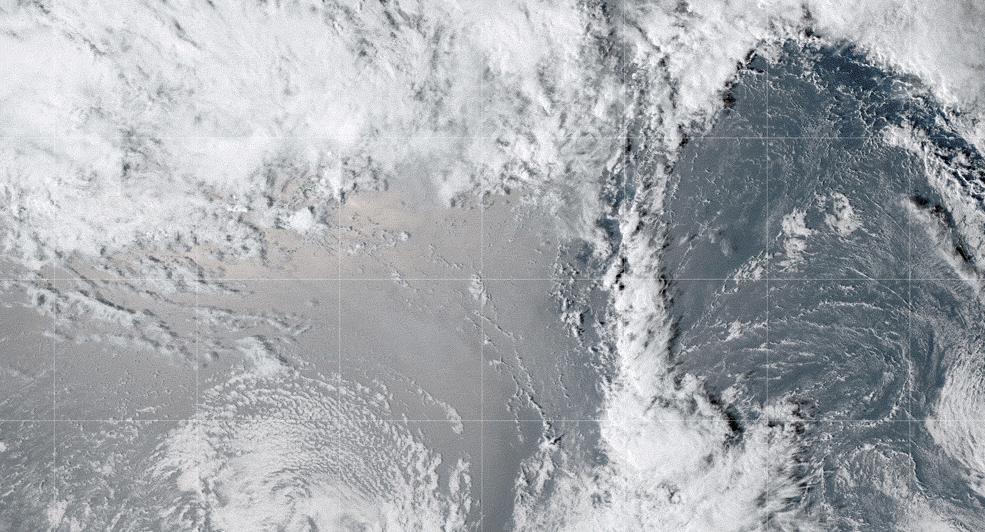
• Geotail*
• Global Observations of the Limb and Disk (GOLD)
• Hinode*
• Interface Region Imaging Spectrograph (IRIS)
• Interstellar Boundary Explorer (IBEX)
• Ionospheric Connection Explorer (ICON)







• Magnetospheric Multiscale (MMS)

• Parker Solar Probe (managed by Johns Hopkins University Applied Physics Laboratory)

• Solar and Heliospheric Observatory (SOHO)*
• Solar Dynamics Observatory (SDO)

• Solar Orbiter*
• Solar Terrestrial Relations Observatory (STEREO)
• Thermosphere Ionosphere Mesosphere Energetics and Dynamics (TIMED)
• Time History of Events and Macroscale Interactions during Substorms (THEMIS/ARTEMIS)
• Wind

•
•
•
• Dragonfly Gamma-Ray and Neutron Spectrometer (DraGNS)

• Dragonfly Mass Spectrometer (DraMS)
• Mars Organic Molecule Analyzer Mass Spectrometer (MOMA-MS)
• Search coils on Beam Plasma Interaction Experiment (BeamPIE)







• Search coils on Space Measurement of A Rocketrelease Turbulence (SMART) mission
• Venus Mass Spectrometer (VMS) OPERATIONAL
•
• Lunar Reconnaissance Orbiter (LRO) and Lunar Orbiter Laser Altimeter (LOLA)

•
• Mars Atmosphere and Volatile EvolutioN mission (MAVEN)
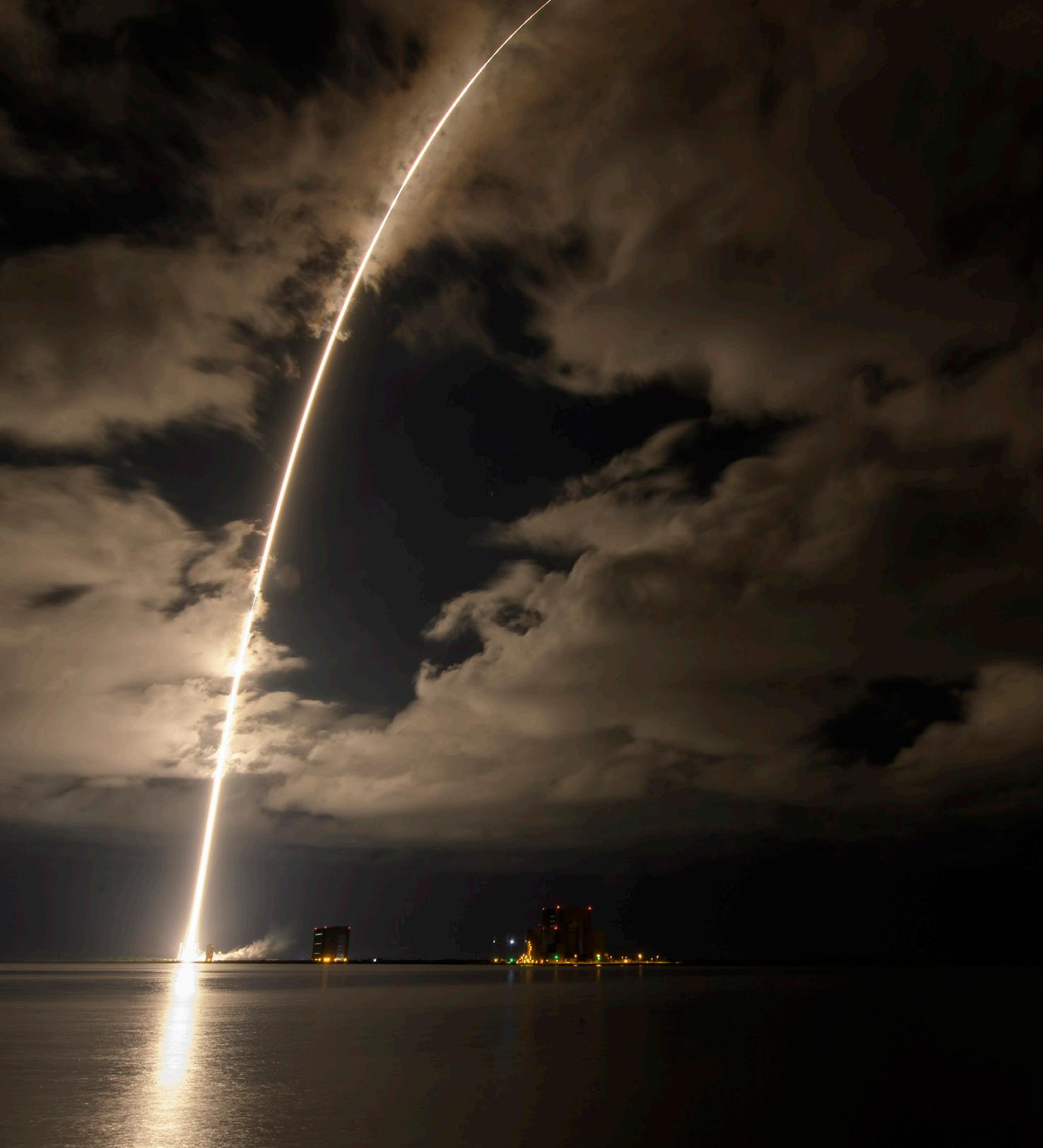



• Neutral Gas and Ion Mass Spectrometer (NGIMS), Magnetometer (MAG)
• Origins, Spectral Interpretation, Resource Identification, Security Regolith Explorer (OSIRIS-REx) and OSIRISREx Visible and Infrared Spectrometer (OVIRS)
• Sample Analysis at Mars (SAM)
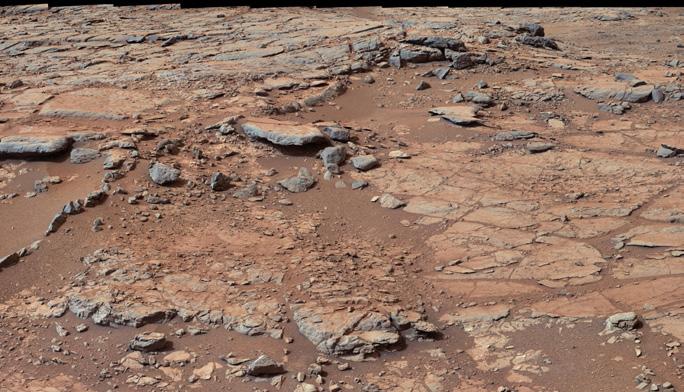

• Search coils on U.S. Air Force Demonstration and Science Experiments (DSX)

• Thermal Infrared Sensor (TIRS)
• Thermal Infrared Sensor-2 (TIRS-2)
Goddard’s communications and navigation experts provide robust networking and tracking services as well as develop cross-cutting technical solutions that drive NASA forward. This year, the community’s Near Space Network, Flight Dynamics Facility, and Search and Rescue office played critical roles in numerous launch vehicle, human spaceflight, and robotic missions. The community further embraced NASA’s goal for network commercialization, connecting with the aerospace industry through requests for proposals and multiple engagement events. The community also developed new technologies – including cloudbased data storage and a quantum networking lab – to advance NASA’s space communications and navigation capabilities. The work accomplished this year directly impacts agency initiatives and will further humanity’s exploration abilities. FACILITIES: Greenbelt, Wallops, White Sands BUDGET: $234.2M








BUDGET PERCENTAGE: 5.0%








IN DEVELOPMENT
• Airborne science flights (P-3, C-130, and B-200 aircraft)
•
of the NASA Autonomous Flight Termination Unit (NAFTU)
• Heliophysics Science and Technology Program Office


(ISS)
OPERATIONAL
• Airborne science missions, such as the Investigation of Microphysics and Precipitation for Atlantic Coast-Threatening Snowstorms (IMPACTS)
• Commercial cargo resupply missions for the International Space Station (2)

• Commercial Crew Program airdrop deployment tests


• Scientific balloons flights from New Zealand, Sweden, and New Mexico

• Sounding rockets flights from Norway, Alaska, Wallops, White Sands, and Australia

• Tracking and telemetry support for Artemis missions









Goddard is pioneering in-space servicing, assembly, and manufacturing (ISAM) capabilities to empower the future of space science and exploration. These technologies are critical to extending the operational lives of satellites via refueling and repair, assembling massive telescopes and observatories in space, and upgrading missions in-orbit via cooperative, modular interfaces.















Goddard is collaborating with and transferring ISAM technologies and capabilities to civil, defense, and commercial stakeholders to usher in a new era of more sustainable, affordable, and resilient spaceflight and jump-start new U.S. industries. These efforts support critical U.S. interests as defined by the White House Office of Science and Technology Policy in its ISAM National Strategy, which was released in April 2022.








PUBLIC
NASA and Goddard are charged with communicating to the widest practicable extent, knowing what works for one audience may not be effective with others. We look at our stakeholders as different categories of audiences: those who receive value from NASA, those who create value for NASA, and those whose decisions allow NASA to generate value.

The commitment by the Goddard Office of Communications to public engagement and communications ensures that the public – our most important stakeholder – remains informed and engaged in our missions and projects. The visitor centers on the Greenbelt and Wallops campuses, tours, and public engagement events provide an opportunity to directly engage with our work.
Multimedia resources give external news organizations and others access to Goddard’s activities and subject matters experts, further allowing us to communicate our work to the public. These include TV media outreach campaigns, such as those covering the Artemis I launch and the release of the first images of the James Webb Space Telescope, as well as other significant events in 2022.


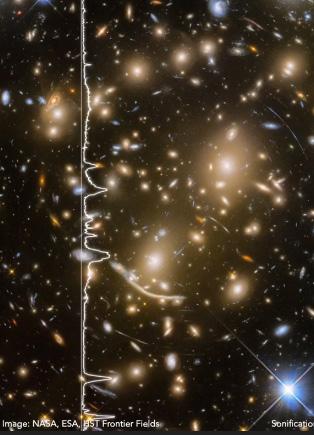


Since the advent of social media about 17 years ago, Goddard has been at the forefront of developing these platforms into a major component of NASA’s communications efforts. Goddard-based teams operate or contribute to about 100 official NASA social media accounts. Goddard is a major leader for the agency’s flagship social media accounts for science:



















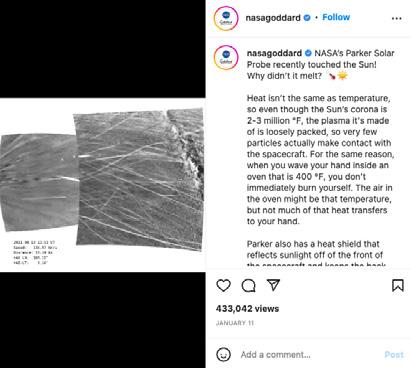


STEM ENGAGEMENT
nasa.gov/centers/goddard/education
The Goddard Office of STEM Engagement immerses students and educators at all levels of NASA’s work, enhances STEM literacy, and inspires the next generation to explore through internships and experiential learning opportunities.

Students compete at the West Virginia State Robotics Competition, facilitated by the Katherine Johnson Independent Verification & Validation Facility Educator Resource Center.

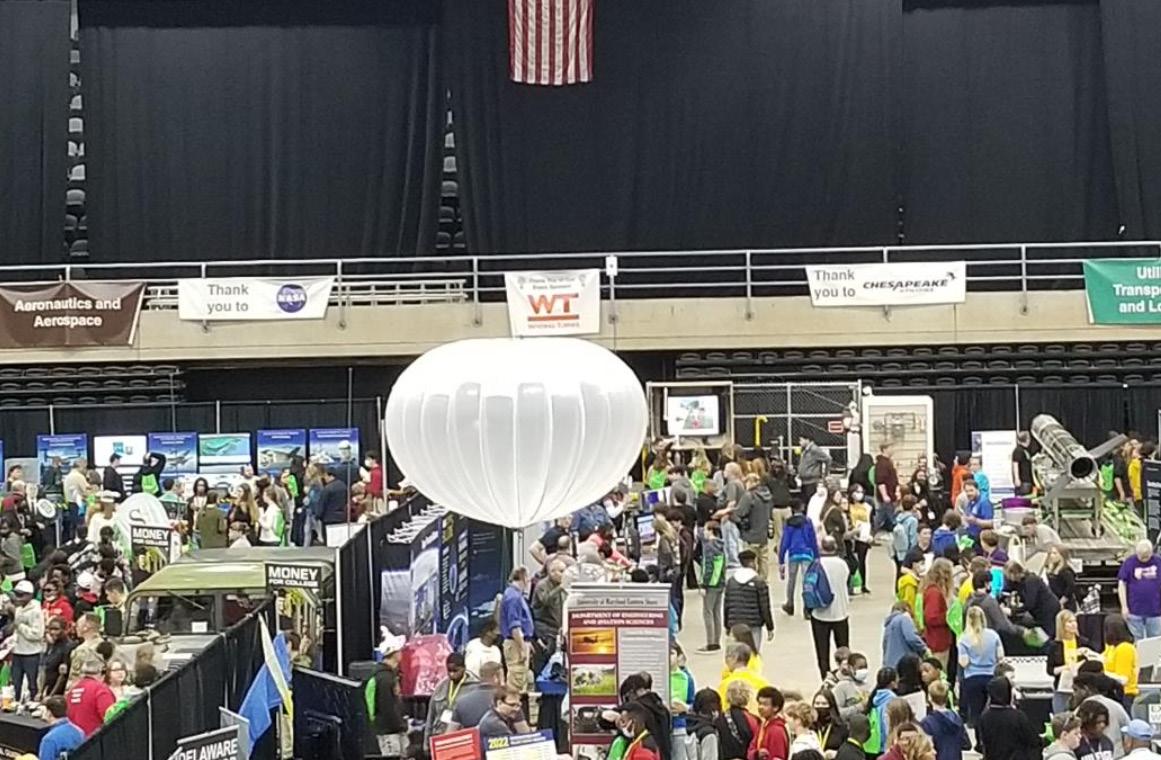
GISS provides a broad portfolio of STEM and climate change education programs, including internships, educator professional development, and institutional capacity building.

Female leaders and interns from Goddard’s Greenbelt campus met with a group of Alabama students from the Women in Training youth empowerment organization.
 Wallops Flight Facility supported the Junior Achievement Inspire career event, with more than 3,500 middle school students from Maryland and Virginia participating.
Wallops Flight Facility supported the Junior Achievement Inspire career event, with more than 3,500 middle school students from Maryland and Virginia participating.
OUR PEOPLE
STATE OF THE WORKFORCE
2022
NASA’s Goddard Space Flight Center strives to enable a culture of inclusion in which all employees feel welcome, respected, connected, and engaged.


Diversity, inclusion, and equal opportunity are vital to the center’s mission, unlocking innovation, collaboration, and creativity along the path to mission success.
Ten employee resource groups – representing and inclusive of employees from all backgrounds – provide benefits for both employees and the center, such as creating safe spaces to build connections, welcoming new employees and interns, promoting recruitment and retention efforts, enabling engagement, and fostering an inclusive work environment.

PROCUREMENT SNAPSHOT
Goddard’s success in enabling NASA missions and applying these scientific achievements to society is evident. Each of Goddard’s six locations supports the center’s ability to stimulate and strengthen economic activity by:
• Expending goods and services to perform its mission.
• Generating technology transfer and spinoff activities.
• Broadening small business opportunities through its robust contracting program.

As we celebrate our collective achievements, we also honor all of those who have contributed to Goddard and are no longer with us.
Your dedication and talent will never be forgotten.
Active civil servants who passed from October 2021 through September 2022 include:
Michael Collier
Jason C. Silva
Callie D. Thessen
Victor S. Yocco
‡Contractors, former civil servants, and others whose reported passing occurred from October 2021 through September 2022 include:
Robert F. Amoruso
Camillo Jerry Arcilesi
Edward Anthony Bielecki
Charles Bland Jr.
Karen A. Blynn
Arlene S. Buarque de Macedo
Joseph C. Cain III
Richard D. Ceresa Jr.
Byron Clemons
John Franklin Cook
William Landy Cook III
Robert E. Davis
Louis John Demas
Joseph Edward Dunn Jr.
James Charles Elliott
David J. Fromme
Dario Emilio Galoppo
Earl C. Gernert Jr.
Herb Gillis
Gloria J. Goodman
Charles Albert Harris Jr.
Ray Hartenstein
Jackson Rea Herring
William Donald Hibbard
Steven Glenn Himes
Thomas E. McGunigal
Spencer Leigh Meade Sr.
Michael Micciolo
Alberta Moran
Roy Morgan
David L. Moulton
Dorothy Karen Moy
James Neal
Joseph Frank Noto
Nils Odegard
John H. Overton
Barbara Jan Owings
Donna Helen Provost
Charles A. Richey
Brian A. Rose
Jeffrey S. Schweitzer
Frank Aloysius Shelton
Phil M. Shimkaveg
Robert E. Spearing
Eric Spencer
Donald W. Stanfill
Epaminondas G. Stassinopoulos
William T. Tallant
Mike Taylor
Thomas D. Taylor Jr.
‡NASA does not have access to this information for former civil servants, contractors, and other affiliated with Goddard. The report authors have been informally notified of some individuals. An earnest attempt was made to collect this information. However, the nature of the process could result in an incomplete list.
Earl Benjamin Jackson
Alvin Carlton Jones
Gregory James Jones
Judith Jones
Nancy Lee Kelly
Saunders Bernard Kramer Jr.
Richard Alan Krogel
Eugene Lefferts
George Lieberman
Genevieve Link
Richard G. Long
Robert James Mackey Jr.
Franci Landis Markley Jr.
Richard A. McCray
Michael C. McCumber
Coerte Van Voorhies
Harry Wajsgras
Robert O. Wales
David W. Walser
Samuel Abram Wax
Linda Rae Werneth
Bill West
Rhonda Whitelocke Mease
Berlin Brown Wittig
Peter Bruce Worland
William Harrison Wynn
Philip Yaffee
Penshu Yeh
VISION
Exploring the secrets of the universe for the benefit of all. MISSION NASA explores the unknown in air and space, innovates for the benefit of humanity, and inspires the world through discovery.

For more information, please visit our website: www.nasa.gov/goddard

